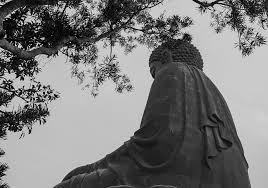
The emergence of Buddhism is somewhat unclear. At the time it might have happened, there were not many records of events. Some say Buddha was born 25, 26 centuries ago.
Some other stories about him say his enlightenment happened on a full moon night after a day of solar eclipse and some other features that when calculated will place Buddha 28 centuries ago.
I will share with you the version I think is closer to the contents of Buddhism. The one, that makes Buddha’s teachings very coherent to what he had experienced and to the legacy he left behind for all of us.
The Prince who left it all behind
Siddarta was born in India. He was the son of a powerful Rajah. As a prince he was expected to replace his father one day. The Rajah, however, received a prophecy that said Siddarta would become a powerful Rajah just like his father, but if he ever was in contact with suffering, he would drop everything and follow the opposite path.
Afraid the possible fulfillment of the prophecy, the Rajah raised Siddhartha within the palace walls, surrounded by fortune and grace. He was not supposed to leave the Palace. There was no suffering of any kind before him
One day, at the age of 29, Siddarta disobeyed his father and left the Palace. On his way, he came across an old man, a sick person and a decomposing corpse.
On his way back to the Palace he met an ascetic and observed the simple man was really at peace and joy, despite the fact that he was poorly dressed and without any belongings. He was dismayed with what he had seen.
He had been face to face with suffering, but also with what he thought was pure happiness. Siddarta came to the conclusion that life he was leading was meaningless.
He understood he would never be happy if people were suffering. He had to find a way of putting an end to this agony. That same night, Siddarta left the Palace and renounced the throne.
The path to Enlightenment
He spent 6 years waking around, meditating, fasting. At some point people started joining him and he got some followers also interested in finding the same answers as he was and who were open to submit to any sacrifice that might be needed.
They were having a really hard life and were getting nowhere. After a couple days fasting near the river, Siddarta heard a boatman yelling “If you tune your instrument too tightly the strings will break, and when you loosen it too much no sound will come out of it.”
At that moment, Siddhartha had an epiphany and understood he was doing something wrong and decided to empty his mind of his own self, off wanting to find the solution for a huge problem.
While his own self was occupying a place in his mind, that answer would never come to him. At this point Siddarta understood the need to become void from himself.
And that’s when he was able to attain Enlightenment.. Under a bodhi tree, he became the Buddha, the enlightened one, who had reached absolute peace of mind, giving him the ability to see that every person, animal, plant, thing is part of a much bigger purpose.
The teachings to show the way
Buddha decided to share what he had learned and experienced and travelled all around giving speeches that became known as Suttas. Sutta also refers to the people he was speaking to.
Followers were gathering, and he already had a couple of disciples. It was needed, first because one day he would not be able to do that anymore, and also because there were a lot of places to cover.
He died around the age of 84. The records are not precise. Many of his disciples decided to reunite and spread his teachings. They started writing it down and dividing it into three ‘baskets’, according to the usage of the teaching.
Buddhism‘s spread around the world
The first reunion of disciples went well, but after that, disputes and disagreements started to manifest. Of course, we picture it happening in a very low voice and without any violence in adherence to Siddartha’s teachings.
Buddhism then was divided into three branches: Theravada, Mahayana and Vajrayana. Those branches would later subdivide into other schools, such as Zen Buddhism that stemmed from the Mahayana and the Tibetan Buddhism that originated in the Vajrayana.
Its influence dissipated in India due to the prominence of Hinduism, but it grew very fast in China and also found a place in Japan. It was also really strong in Tibet, but after China invaded in 1950, it became really restricted. In 1959, at the start of Tibetan uprising, the Dalai Lama and his retinue feared for their lives and fled to India Nowadays, most Tibetan Buddhists are not in Tibet.
However, despite all of this, Buddhism continues to spread, especially in the west and Buddhists can be found all around the world.










